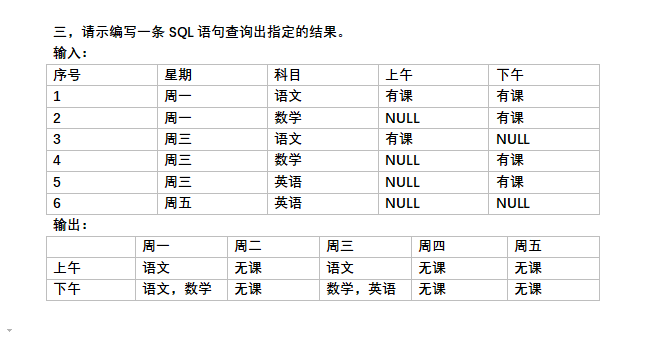I\'m looking at a crash report provided by Apple
Hardware Model: iPhone4,1
Version: ??? (???)
Code Type: ARM (Native)
Parent Process: launchd [1]
Date/Time: 2012-11-18 16:03:44.951 -0600
OS Version: iOS 6.0.1 (10A523)
Report Version: 104
Exception Type: EXC_BAD_ACCESS (SIGSEGV)
Exception Codes: KERN_INVALID_ADDRESS at 0x51fe5264
Crashed Thread: 0
Thread 0 name: Dispatch queue: com.apple.main-thread
Thread 0 Crashed:
0 libobjc.A.dylib 0x352925b0 objc_msgSend + 16
1 MYAPP 0x0006573a -[MyViewController(Images) didReceiveImage:context:etag:expires:] + 42
2 MYAPP 0x0004fb26 -[MyImageTask didReceiveImage:] + 98
3 Foundation 0x361ac8e8 __NSThreadPerformPerform
4 CoreFoundation 0x3b37d680 __CFRUNLOOP_IS_CALLING_OUT_TO_A_SOURCE0_PERFORM_FUNCTION__
5 CoreFoundation 0x3b37cee4 __CFRunLoopDoSources0
6 CoreFoundation 0x3b37bcb2 __CFRunLoopRun
7 CoreFoundation 0x3b2eeeb8 CFRunLoopRunSpecific
8 CoreFoundation 0x3b2eed44 CFRunLoopRunInMode
9 GraphicsServices 0x396bc2e6 GSEventRunModal
10 UIKit 0x3452e2f4 UIApplicationMain
11 MYAPP 0x0004934a main + 70
12 MYAPP 0x000492fc start + 36
The funny thing is when I use atos to lookup the line of code that corresponds to address locations 0x0006573a and 0x0004fb26 I get completely different match. The atos output is not even from the same class that\'s mentioned in the crash log (MyViewController, MyImageTask). Instead atos points me to totally benign lines of code in a completely unrelated class. I verified again that I\'m working with the exact dSYM and IPA that I submitted to Apple.
My atos command
/Applications/Xcode.app/Contents/Developer/usr/bin/atos -arch armv7 -o MYAPP.app/MYAPP 0x0004fb26
Same result with /usr/bin/atos and for armv7s.
Has anyone else experienced this issue? Can you please advise? Thanks.
You have to calculate the address to use with atos, you can\'t just use the one in the stacktrace.
symbol address = slide + stack address - load address
The slide value is the value of vmaddr in LC_SEGMENT cmd (Mostly this is 0x1000). Run the following to get it:
otool -arch ARCHITECTURE -l \"APP_BUNDLE/APP_EXECUTABLE\" | grep -B 3 -A 8 -m 2 \"__TEXT\"
Replace ARCHITECTURE with the actual architecture the crash report shows, e.g. armv7.
Replace APP_BUNDLE/APP_EXECUTABLE with the path to the actual executable.
The stack address is the hex value from the crash report.
The load address can be is the first address showing in the Binary Images section at the very front of the line which contains your executable. (Usually the first entry).
Since in the past value of the slide was equal to value of the load address this always worked. But since Apple introduced Address space layout randomization beginning with iOS 4.3 (in different variations), the apps loading address is randomized for security reasons.
A simpler alternative: you can use the atos -l flag to make it do the maths for you.
Say you\'ve got the following line in your crash log that you want to symbolicate:
5 MyApp 0x0044e89a 0x29000 + 4348058
The first hex number is the stack address, and the second hex number is the load address. You can ignore the last number. You don\'t need to worry about slide addresses either.
To symbolicate, do the following:
atos -o MyApp.app/MyApp -arch armv7 -l 0x29000 0x0044e89a
If you can\'t find your MyApp.app/MyApp file, rename your \'.ipa\' file to a \'.zip\', unzip it, and it\'ll be in the Payload folder.
And if you\'re not sure which architecture to use (for example, armv7 or armv7s), scroll to the \'Binary Images\' part of the crash file and you can find it in there.
Cheers
Simply use dwarfdump:
dwarfdump --arch armv7 myApp.dSYM --lookup 0xaabbccdd | grep \'Line table\'
No need to do any calculations at all.
(From Get symbol by address (symbolicating binary, iOS build)).
For whom that certain times doesn\'t have the value for Load Address like this:
Jan 14 11:02:39 Dennins-iPhone AppName[584] <Critical>: Stack Trace: (
0 CoreFoundation 0x2c3084b7 <redacted> + 150
1 libobjc.A.dylib 0x39abec8b objc_exception_throw + 38
2 CoreFoundation 0x2c21cc35 CFRunLoopRemoveTimer + 0
3 AppName 0x0005a7db AppName + 272347
I\'ve created a simple bash to help me debug:
#! /bin/bash
read -p \"[Path] [App Name] [Stack Address] [DecimalSum] \" path appName stackAddress decimalSum
loadAddress=`echo \"obase=16;ibase=10;$((stackAddress-decimalSum))\" | bc`
atos -o $path/Payload/$appName.app/$appName -l $loadAddress $stackAddress -arch armv7
It just reads the path for the app, the app name, the stack address, and the value after \"+\" signal (the decimal value) and then find the value for load address to run atos command.


